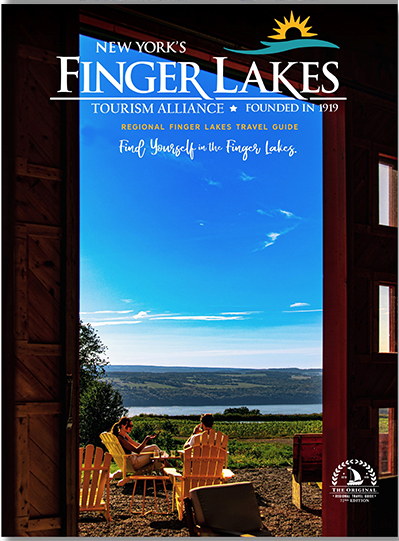Environments Examined Lecture | From High Tech Science to High Tech Art: Transforming Data into Action
Free and open to the public | Suggested $10 donation for Not-Yet-Members | Register to receive link
5:30 – 6:30 p.m. | Lecture
6:30 – 7 p.m. | Q&A
Lecture Description
The Anthropocene is characterized by overwhelming evidence of human impact on Earth’s climate and ecosystems. In some cases, these impacts may be readily observed or even experienced firsthand. In others, the complexity of natural processes requires specialized technology to pinpoint the source and scale of the problem. What role does technology play in revealing these unseen connections on a changing planet? How can art help translate high-tech science into understanding and action? At the Smithsonian Conservation Biology Institute, scientists have teamed up with visual artists to put the impacts of the Anthropocene into perspective. By transforming complex datasets into emotionally compelling art pieces, artists are helping scientists tell the complicated story of life on a changing planet.
About Mark Hirsch, Ph.D. Candidate | Data Artist
Mark Hirsch is a Ph.D. Candidate, part of the Media Arts & Technology Program, University of California Santa Barbara. He is an artist and researcher currently based in Santa Barbara, California. His work investigates: Computational fabrication, design, and sculpture; Machine Learning and Artificial Intelligence as tools for creative practice; and data-driven approaches to making art that connect form and information.
A native of the American Midwest, Hirsch is currently a PhD candidate in the Media Arts & Technology program at UC Santa Barbara. Prior to his doctoral studies, Hirsch completed a bachelor of music at Lawrence University’s Conservatory of Music and a master of music at the Shepherd School of Music at Rice University.
About Dr. Martin J. Collins, Ph.D. | National Air and Space Museum
Dr. Martin J. Collins, Ph.D. is a Curator and historian in the National Air and Space Museum’s Department of Space History, with a focus on the technology and culture of the space age. Martin’s current exhibition projects include One World Connected, a look at the role of aviation and spaceflight in recent globalization, and Climate Crisis. He served for eight years as editor-in-chief of the journal History and Technology: An International Journal (Routledge) and presently is managing editor of the book series Artefacts: Studies in the History of Science and Technology, published by Smithsonian Institution Scholarly Press. His most recent book publication is A Telephone for the World: Motorola, Iridium, and the Making of a Global Age (Baltimore: Johns Hopkins University Press, 2018).
About Dr. Jared Stabach, Ph.D. | Movement of Life Scientist
Jared is an ecologist at the Smithsonian Conservation Biology Institute’s Conservation Ecology Center (CEC) and the program coordinator for the Smithsonian’s Movement of Life Initiative. His research focuses on the factors that affect the abundance, distribution, and movement patterns of large terrestrial mammals, incorporating emerging technologies, such as unmanned aerial systems, GPS tracking collars and high-resolution imagery, to better understand and monitor changes occurring across the planet. Since joining the CEC as a postdoctoral research fellow in 2015, he has worked on large collaborative teams to reintroduce scimitar-horned oryx, evaluated the factors influencing the occurrence of critically endangered addax, and co-authored scientific research focused on developing solutions to conservation challenges. He is currently developing a scientific collaboration with the Giraffe Conservation Foundation to provide an increased understanding of the factors leading to the rapid decline of giraffe populations across Africa and continues to focus on the migration of white-bearded wildebeest, one of earth’s greatest natural phenomena. He serves as a scientific advisor on the International Union for Conservation of Nature’s Giraffe and Okapi Specialist Group, as well as the Sahara-Sahel Interest Group, and is a current member of the Smithsonian Animal Care and Use Research Subcommittee. He received a BS from Providence College, an MS from the University of Rhode Island, and a Ph.D. from Colorado State University.
About Dr. Autumn-Lynn Harrison, Ph.D. | Movement of Life Scientist
Dr. Autumn-Lynn Harrison, Ph.D. is a research ecologist with the Smithsonian Migratory Bird Center and the program manager of the Migratory Connectivity Project, based at the Smithsonian Institution, National Zoological Park, Washington, D.C. USA. Dr. Harrison studies the migrations of marine and coastal animals like seabirds, shorebirds, seals, and sea turtles and applies this research to conservation and management. She has lived and worked in Australia, Kenya, South Africa and the U.S, and her work has included leading field projects to track the migrations of seabirds from the Alaskan Arctic and seals in South Africa. Dr. Harrison was a researcher with the Tagging of Pacific Predators, a project of the Census of Marine Life, and through this work, she contributed to United Nations efforts to identify important places for migratory marine animals in international waters of the Pacific Ocean, work that has been included in U.N. discussions to craft a new ocean treaty. Harrison earned B.S. Degrees in Environmental Science and Fisheries and Wildlife Science from Virginia Tech, a Graduate Diploma of Science in Tropical Marine Ecology and Fisheries Science from James Cook University in Townsville, Australia, and a Ph.D. in Ecology and Evolutionary Biology from the University of California, Santa Cruz.
Event Format: This is a Zoom Webinar – that means your camera and microphone won’t be activated, and you’ll be able to just sit back, relax and listen in. A chat box will be available for you to engage with the other attendees and ask questions.
